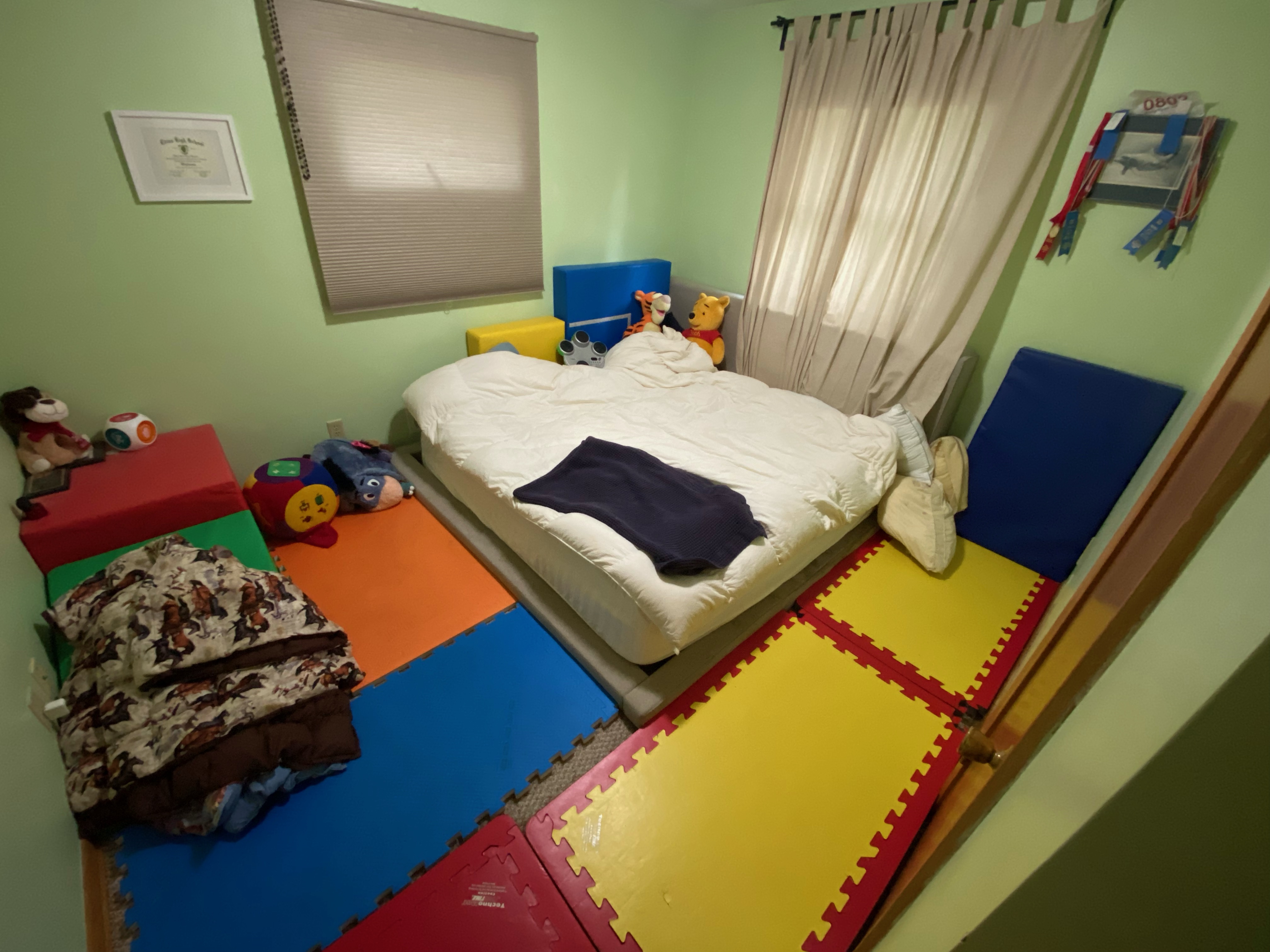Dwellness™ • Bed Comfort, Safety, and Mobility
Bed Comfort, Safety, and Mobility
Dwellness™ customization for:
Your Patient
General Principles
[NOTE: Before you undertake this routine, please study and practice the principles of Safe Body Dynamics for your patient’s transfers and ambulation.]
→ Breathe! Never hold your breath and bear down when exerting yourself ←
→ Stretching helps prevent injury… stretch before work, and stretch every day ←
→ Keep a low center of gravity during transferring or lifting ←
→ When not transferring or lifting, stand and walk fully erect with abdominals engaged ←
→ Think carefully about each move you make ←
→ Prompt your patient's movements, prepare, and wait for a response before moving yourself ←
→ When in doubt, pause and reconsider your next move ←
→ If your patient decides to go down to the floor, do not resist; gently lower your patient ←
Nighttime Routines
Situation awareness
→ CAUTION: Check on your patient every few minutes to be sure your patient is safe and does not need help with your patient's positioning. ←
[NOTE: For time alone in the bedroom, and for bedroom activities, please note the limits to floor time below]
- Listen
- Do not distract your listening with media during an overnight shift
- Most often when your patient is trying to turn in bed, your patient will grunt or breathe heavily
- If your patient gets out of bed in the night, there will be a "thump" as your patient rolls out of bed or lunges forward
- He also can talk or make sounds responding to dreams, which doesn’t mean any discomfort or risk
- Check
- At regular intervals, do a visual check
- Focus on your patient's position
- Apparent positional comfort
- Physical alignment
- Openness of mouth and nose for breathing
- Focus on the room configuration
- Padding in the right places
- No exposed hard surfaces
- Clear paths
- Clear air flow
- Noise generator
- Focus on temperature comfort according to changing weather
- Shift covers
- Increase or decrease covers
- Change thermostat setting
- Adjust
- If your patient tries to turn, but is uncomfortable, gently and patiently help your patient turn
- Be sure the drum machine is not too close to your patient, but close enough for your patient to listen
- When your patient wakes before 3:30am
- If stays in your patient's bed, try to encourage your patient to go back to sleep
- If your patient gets up, or says "Up"
- Assume that your patient has to void
- Using Safe Body Dynamics, transfer your patient into your patient's Rifton chair
- Monitor your patient's briefs and underpad for when your patient might void
- Other tasks that can encourage your patient to sleep more
- Keep stimulus low — softer music, less talk, etc.
- Administer Acetaminophen (Tylenol) per Medication Administration Routines
- Administer 2-3mL of Clonazepam per Medication Administration Routines
- If your patient voids in the Rifton chair
- Get your patient up and change your patient's briefs (see Toileting)
- Using Safe Body Dynamics, transfer your patient into your patient's bed again
- If your patient insists on staying up, but does not void
- Try the technique of standing at the toilet to void (see Toileting)
- If this does not work, transfer your patient into the Rifton chair and proceed with the morning routines
- Even if your patient wakes too early and stays up, keep the usual time schedule for morning routines
[NOTE: Limit this stage to around 60-90 minutes. After this time — if your patient does not void — try to get your patient to sleep again by transferring your patient into your patient's bed and encouraging sleep.]
[NOTE: Watch carefully when your patient spends time alone on the floor in the bedroom. Even though there are mats, if your patient sits in one place, then feet and legs will fall asleep. If your patient is crawling around, there will be no limit to the time spent on the floor. If your patient is sitting up in bed, there is no time limit.]
- Sitting still on the floor mats
- After about 15-20 minutes, get your patient up and out of the bedroom
- Optional — put your patient in bed to sit
- No time limit
- Crawling around in the bedroom on the mats
- No time limit
- Sitting up in bed
- The bed is soft enough, there is no time limit
Dwellness input from HPCA and family caregivers can serve to improve the ongoing support system. Feel free to speak up!
 Dwellness
Dwellness